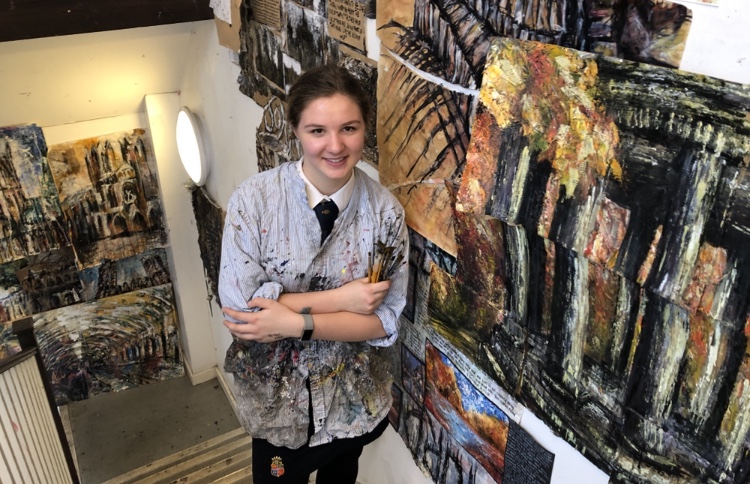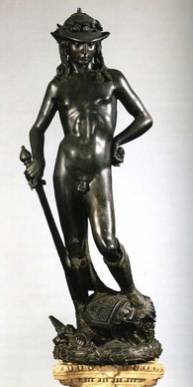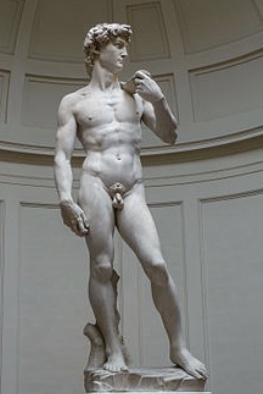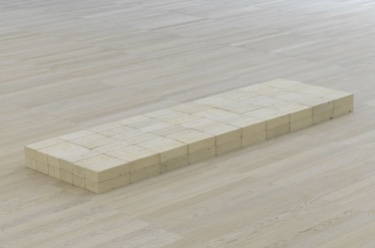STUDENT BLOG: Why art is important

Sixth former POPPY ROBINSON, who plans to work in curation, says all art - from the most boring dusty portrait to a pile of bricks in a gallery - has an important story to tell
TO many people history of art is a little-known topic relating to study of dusty portraits hung in galleries. As a student taking my passion for history of art to university level next year, I want to suggest it’s much more than the labels often placed upon it.
To me, history of art is not just the study of artworks; it’s the study of politics, history, society, anthropology and so much more. Through lining up art works over time one can see major political and social events reflected in the works.
Generally, art is viewed as a female-dominated field, however that’s far from the truth. Not only is there a gender gap in the art industry but there is also a racial and LGBTQ imbalance.
For example, while in 2016, 65 to 80 per cent of art and art history students were women, only eight out of the top one hundred artists, based on sales, were female. A 2015 study showed that whilst 70% of curators are women, the top 12 art galleries in the world are all directed by men.
And, while only 35 per cent of participants in the prestigious Venice Biennale exhibition in 2017 were women, with just 5 of the 120 artists black, in 2013 it was estimated that less than one third of artists represented by commercial galleries were women.
I see my future in curation and combatting the inequalities I’ve just detailed. The ‘Art World’ is just one industry that needs reforming. The music industry also lacks gender balance, and there are other fields which are female-dominated. However, it’s a perfect example of our assumptions about the status quo (particularly in gender) being undermined.
Art history is a fascinating diverse field, and full of surprises, and I would thoroughly recommend studying it. For millions of years people had no other way of documenting events or ideas visually other than in art, and it’s amazing to see how knowledge from the Stone Age to our contemporary era is captured and modelled in art.
Take science for example; during the Renaissance there was no distinction between art and science, to be a master of one was to be a master of the other, Da Vinci being the most famous example. This meant that advances in science, such as developments in understanding the human anatomy, were reflected in the artwork (rather than appearing in the New Scientist or Facebook as you might expect today). Compare Donatello’s ‘David’ with Michelangelo’s one hundred years later. Both masters of their field, both the same subject but drastically different understandings of the human body. Notice the realistic muscles of Michelangelo’s David (art history is all about detective work) and compare them to strange chest proportions of Donatello’s, this change represents birth, the growing interest in the human body and the scientific advances such as Vesalius’s studies of the human body in ‘De Humani Corpis Fabrica’.
Art not only informs about science but everything from religion to race to social divisions and sexuality. It is not just an aesthetic entity, it is a tool that can be used to decode history, even the most seemingly boring dusty Georgian portrait has a story to tell, this is one of the reasons why I find art history so fascinating.


Often contemporary art is perceived as expensive nonsense, and not art. So many people walk through galleries dismissing it. To me contemporary art is about emotion, the artists are trying to get you to feel something; whether its shock, amusement, disgust or even confusion. There’ll be artworks you naturally connect to more than others, but I would recommend, that before dismissal, you assess your reactions.
The picture below, ‘Equivalent VIII’ by Carl Andres, bought by the Tate Gallery in 1972 for $6,000 in today’s money, sparked criticism in the press. Contrary to popular belief this is not just ‘pile of bricks’ in a gallery.

Andres is intending to shock us; surrounded by supposed acclaimed pieces of art in the gallery this ‘pile’ seems out of place, making us revaluate our assumptions about what art is (this the aim of many modern works). I believe Andres is also making us re-examine our view of the material world. Bricks are normally used to build something solid, secure and habitable, and whilst the rectangular composition suggests solidity, the lack of cement and pale colours make the object less secure, and void of purpose. What’s more the shape is similar to the size of a body, the sandstone like the colour of skin, which, to me, raises questions about death and burial.
You see my process; contemporary art is about making us think (this making it even more interesting that traditional art pieces in my opinion). None of my inferences may be technically what Andres intended to do but my reaction and thought processes give meaning to the art.
I’m leaving you with a quote which I believe is crucial in understanding art and the study of it: “The principles of true art is not to portray, but to evoke” Jerzy Kosinski (a polish born writer)
*All statistics taken from ‘Curatorial Activism’ by Maura Reilly (2018)







